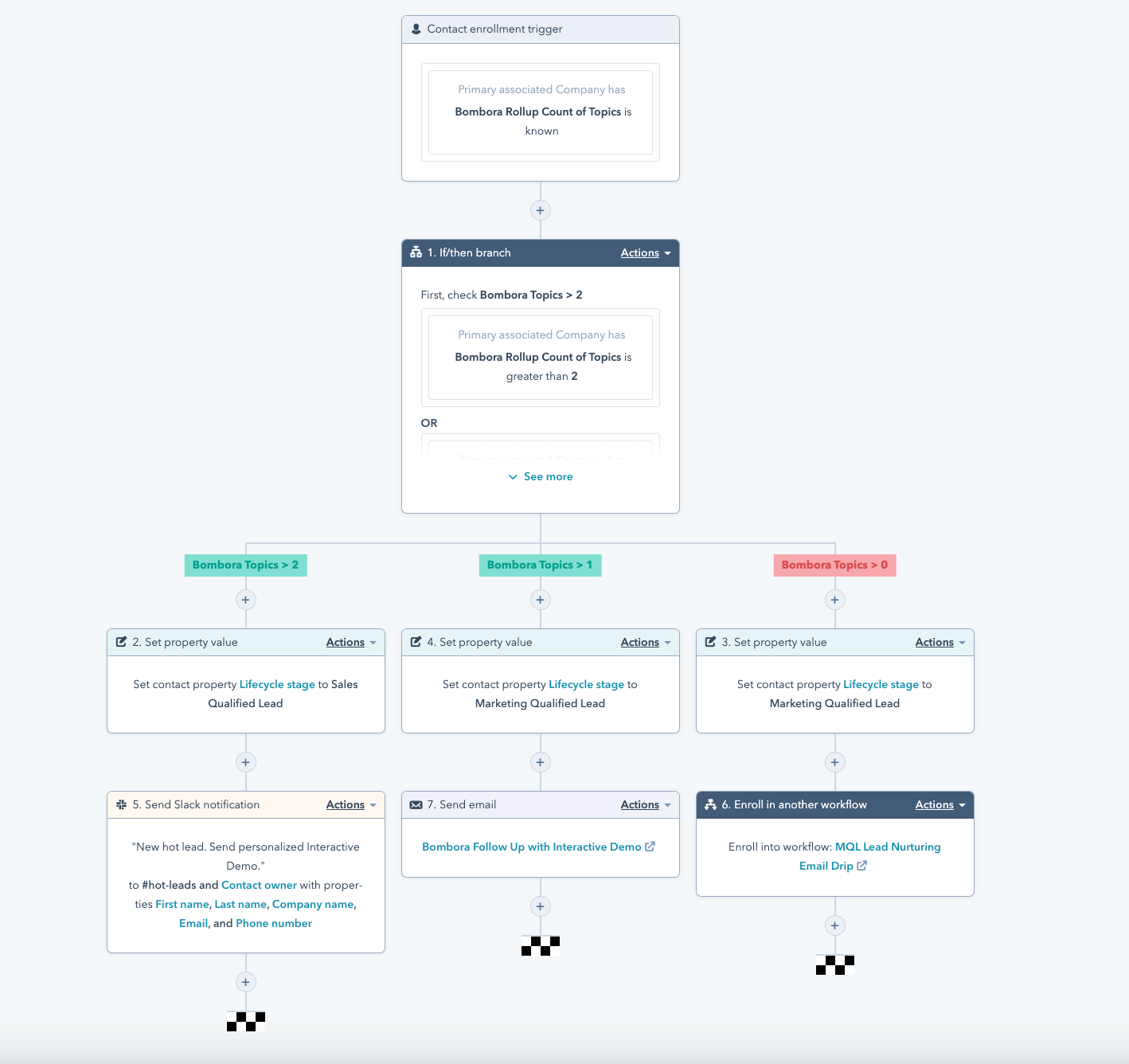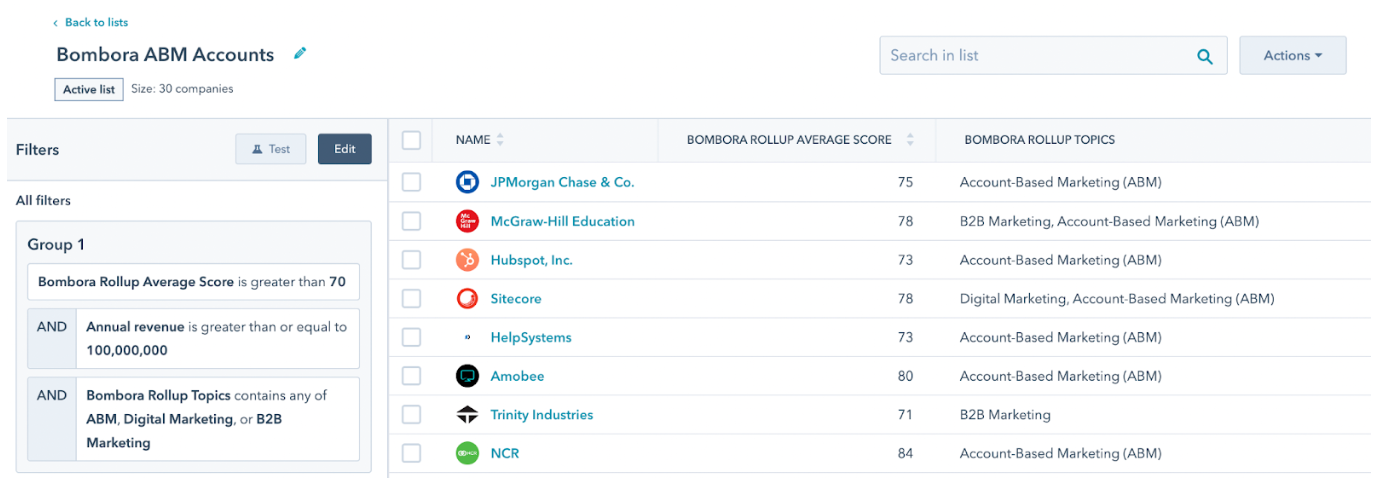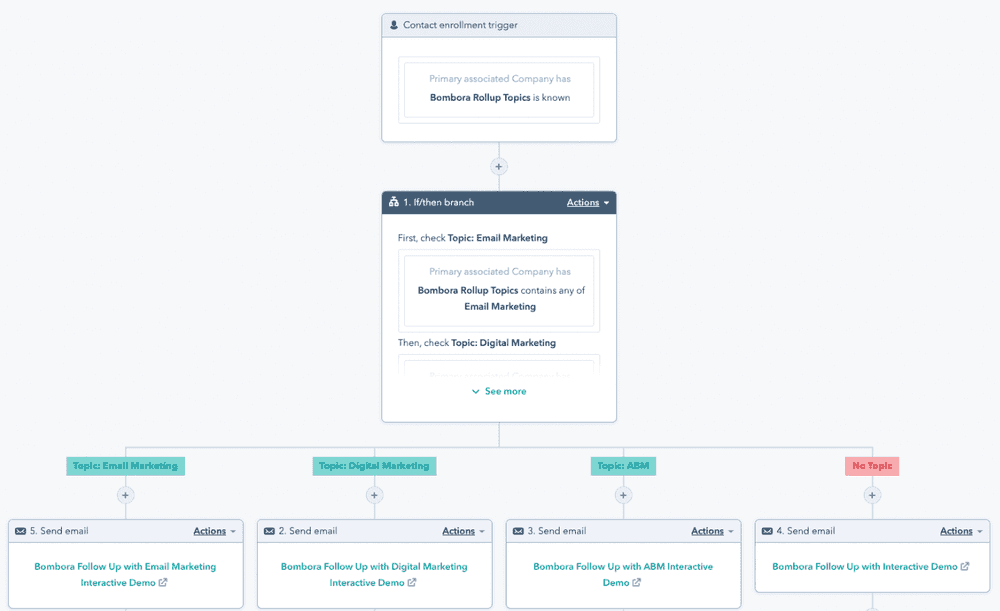How to Use Intent Data with Interactive Product Demos for Hyper-Targeted Outreach

Head of Growth & Product Marketing
As inboxes have gotten more crowded, companies need to adapt their outreach strategies to be personalized and relevant. User Intent data is a great way to understand when your prospects or customers are in the market for your solution. But knowing how to implement that data in your outreach can take a bit of finesse.
In this article, we’ll discuss how to use Intent data paired with interactive product demos for hyper-targeted marketing outreach.
What is Intent data & what is its value?
Buyer Intent data provides information about a prospective buyer’s intention to purchase a product or service.
Aggregated from a prospect’s online behavior, Intent data often involves information like what websites the prospect has searched or what content they’ve consumed on the internet.
Intent data is an incredibly valuable tool because it helps marketers and sales professionals understand what prospects are likely to buy and when and who to hyper-focus resources on.
Gathering and effectively using Intent data helps tailor messaging towards the appropriate buyer profile and use case. In addition, it allows marketers to pivot quickly in response to changing buyer behavior.
There are two types of Intent data: first and third-party data. As a recap:
- First-party data is behavioral data collected across platforms like your business’ website or app, gathered in your CRM, subscription campaigns, social media efforts, and online surveys and forms.
- Third-party data is, as the name suggests, Intent data that’s collected from third parties and can provide a broader view of buyer’s intent. There are a number of ways to collect third-party data. Bombora, the leading Intent-data provider aggregates buyer Intent data from trustworthy, transparent data collection sources.
Accessing Intent data is the first step. But taking action on it is the ultimate goal. Intent data from providers like Bombora can be used in conjunction with CRM or MAP software, like HubSpot, and an interactive product demo platform, like Navattic for more effective outreach strategies.
Here are five examples of how Intent data can be used with interactive demos to deliver hyper-targeted outreach.
Example 1: Qualify and nurture leads
Buyer Intent data can be used at all stages of the sales funnel, and in different ways. Using this data in a CRM like HubSpot, you can target hot prospects, prospects that need qualification, and low intent prospects and automate action. Here’s how.
Hot prospects
Hot prospects are prospects that show serious intent to purchase your product or service and should be targeted for sales action immediately. In the Hubspot example workflow below, we use Bombora Company Surge® data and Topic Counts to determine how qualified a lead is. Hot prospects are those who have searched more than two related topics.

The more topics a prospect is searching for related to your product the higher the purchase intent for your product. The integration of Bombora’s Company Surge® data with a CRM like HubSpot, allows your team to get alerted when prospects hits this threshold.
Once alerted, your sales team can send personalized emails or outreach with hyper-targeted personalized interactive demos that highlights how your product can solve the specific problem the prospect is searching for.
When sending a personalized product demo, it should be concise and hit on only the main points relevant to that prospect. These demos should be like the hook. The goal of your demo should be to have the prospect understand your product’s value and get them to the next step of the sales process.
Prospects who need qualification
Prospects who need qualification are those who may be showing some interest in your product or service, but you are not sure if they are a good fit for your product. In the example above, prospects who need qualification are those who have more than one Topic Count.
These prospects can be targeted with more general interactive product demos via automated — but still personalized — emails. Standard interactive product demos can cover the basics that align with that user behavior, giving them more of an overview of the problems your product can solve.
By sending these standard product demos, prospects can qualify themselves and schedule time with the team if your product fits their needs.
Low intent prospects
Low intent prospects are prospects who may be searching for solutions, but don’t need them right away. But just because they have little to no intention of purchasing now, doesn’t mean they won’t in the future. You should still nurture them with marketing content to keep your brand in front of them as they evaluate their options.
In the example above, you can see low intent prospects are those who have only one Topic Count.
For low intent prospects, use Intent data to create an automated drip nurture email cadence with a standard product demo. This helps to keep your product top-of-mind when low intent prospects may be thinking about purchasing.
Example 2: Run ABM campaigns
If you’re running ABM campaigns to target top accounts, Intent data can be a huge asset.
Partnering with an Intent data provider like Bombora that provides native integrations with CRMs like HubSpot can help you identify top accounts more easily to create personalized product demos for.
These product demos should be tailored with the company’s logo and address specific features or use cases relevant to those individual accounts. Our capture editor makes it easy to personalize a pre-created demo with account-based touches such as logo or company names.
In the example below, you can see how Intent data from Bombora is layered into Hubspot to show potentially high-value and large accounts that should be targeted right away.

On top of email outreach with interactive demos to these companies, you can also add these companies to an ad campaign in HubSpot. In those ads, use the same hyper-targeted product demo as a new CTA.
Using a “take a tour” call to action (CTA) helped FORM decrease their cost per lead in ABM campaigns by nearly 50% when compared to campaigns running with the “request a demo” CTA.
Example 3: Create cluster-specific interactive demos
As the name suggests, clusters are a group of topics rolled up into a larger segment.
For example, if someone is looking up terms for Google ads, LinkedIn ads, and digital marketing software, this could all fall into the digital marketing cluster.
To target based on clusters, you can create interactive demos for different features or product lines that are related to the individual specific clusters. In the example below, Intent data is gathered from Bombora and integrated into HubSpot.
The workflow then branches based on the specific clusters or rollup topic that company is interested in. You can then send an automated email with an interactive demo that matches highlights how your product serves those topics.

Example 4: Engage multiple decision-makers
Gartner found that the typical B2B SaaS solution involved 6 to 10 decisions on average. To get ahead of the competition, you need a way to empower your champion to get internal buy-in.
When working on an opportunity, you can use Bombora’s Intent data to help you identify who might be searching for competitors or other features that your product offers.
If you find this is the case, you can send your champion a tailored, interactive product demo that showcases how your product does it better than the competition.
Since interactive demos can be easily shared through a link, your champion can then pass it throughout the organization and get internal buy-in.
Example 5: Reinforce value before renewal
During contract renewals, it’s not uncommon for customers to research competitors. Intent data can reveal their behavior and provide you with important insights to take action.
If you see that your customer is researching a specific feature or software suite, you can tailor your outreach by sending them an interactive product demo that highlights how your product does it better.
If these additional features are add-ons that the customer did not know about, this may also be an opportunity to upsell the customer.
As a bonus, you can use the interactive demos to train them on these new features.